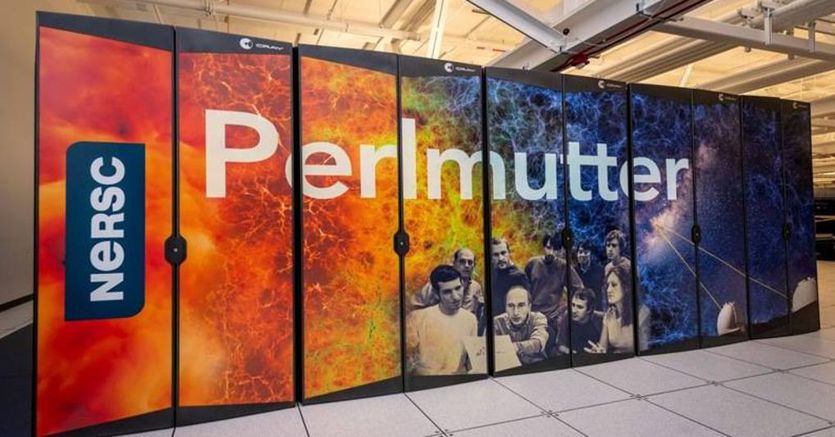Integrating AI-based computing into the current SuperMUC-NG high-performance computing system: this is the substantial step forward that Lenovo Infrastructure Solutions Group, Intel and the Leibniz Supercomputing Center of the Bavarian Academy of Sciences have taken to kick off to “phase 2” of the project dedicated to supercomputing also financed with the contribution of the German Federal Ministry of Education and Research. Artificial intelligence, reads a note released by the Chinese company, will increase the ability to perform advanced simulations, models and data analysis in support of research activities and will allow the system to remain one of the fastest and most efficient supercomputers in the world. world (SuperMUC-NG currently ranks 15th in the Top 500).
Four times the performance
From the first phase, the super brain had been used both for traditional simulation and modeling operations and to automate the recognition of images and shapes recurring in the observation of the planet, medical records, health and demographic data. To meet the growing need for high-performance data analytics, machine learning and fast memory, the SuperMUC-NG will therefore be enhanced with third-generation Intel Xeon Scalable processors (codenamed Sapphire Rapids) and with the new GPU (also from the manufacturer of some Californian) based on the Xe Hpc “Ponte Vecchio” architecture. In “phase two”, a Daos (Distributed Asyncronous Object Storage) system will be deployed within Lenovo’s ThinkSystem SR630 V2 lukewarm water-cooled platform that will provide data storage space of up to one petabyte and ensure faster throughput. during the processing of very large volumes of information. Overall, the new SuperMUC-NG compute nodes will deliver four times higher performance per Watt than the previous ones and will be available to the user community starting from the second quarter of 2022.
Loading…
Eni’s machine among the 500 super brains in the world
The last edition, the 56th, of the TOP500, the ranking that ranks the most powerful supercomputers on earth, saw the confirmation of the Japanese Fugaku on the top step of the podium with 442 petaflops on the High Performance Linpack benchmark and recorded the lowest number of new entries since the project started in 1993. Some curiosities in figures. The entry level has now risen to 1.32 petaflops and the aggregate performance of all 500 systems reviewed has gone from 2.22 exaflops last June to 2.43 exaflops in November. Similarly, the average concurrency per system (the set of computational processes or sub-processes running at the same time) has practically remained unchanged, rising from 145,363 to 145,465 cores. Behind Fujitsu’s Japanese supercomputer, equipped with over 7.6 million Arm A64FX technology brains, there are officially two American specimens, Summit and Sierra, with very similar architectures. The first is a 4,356-node IBM system, each of which houses two 22-core Power9 CPUs and six Nvidia Tesla V100 GPUs, in operation at the Oak Ridge National Laboratory in Tennesseed and is currently the fastest in the United States with its 148.8 petaflops. The second was made by Lawrence Livermore National Laboratory, in California, and reaches 94.6 petaflops. Among Chinese, Saudi and American projects, in eighth place in the ranking there is HPC5, a Dell PowerEdge system installed at Eni: its performance reaches 35.5 petaflops, thanks to Intel Xeon Gold CPU and Nvidia Tesla V100 GPU. and make it the most powerful supercomputer of the Top500 considering its use for commercial purposes at a corporate client.
The most powerful AI system that will study the universe
Not yet ranked in the Top 500 but in fact the second fastest brain in the world, the Cray system recently inaugurated at the National Energy Research Scientific Computing Center in Berkeley laboratories is a machine that combines deep learning and advanced simulation capabilities, claiming the throne. of the world‘s most powerful AI unit. Perlmutter, this is his name, will be used for various scientific projects, including the creation of the largest 3D map of the universe visible through the image processing of the Dark Energy Spectroscopic Instrument, a sort of cosmic camera capable of capturing over 5 thousand galaxies with a single exposure. It uses 64-core AMD CPUs (the Epyc 7763) and Nvidia’s A100 GPUs to reach 180 petaflops of standard performance and in its initial version it has 1,536 computing nodes and 35 petabytes of storage space.
